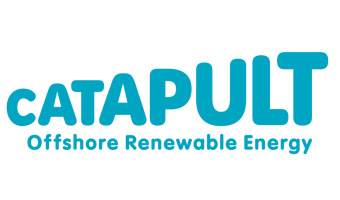Onshore Wind Conference 2025 Programme
- Time
- Details
Registration, Exhibition & Networking
Welcome & Keynote Address
Claire Mack OBE, Chief Executive, Scottish Renewables
Chris Stark CBE, Head of Mission Control for Clean Power 2030
Session 1: Onshore wind’s window of opportunity
With ambitious clean power targets in place for 2030, onshore wind is back on the UK Government’s national agenda. Two years on from the signing of the Scottish Onshore Wind Sector Deal, a year since the de facto ban was lifted in England and a few months after the publication of the Onshore Wind Industry Strategy, where are we now and how do we build on this momentum?
This session takes stock of onshore wind achievements to date and offers a forward-looking view of the sector’s direction. Recognising the renewed political will and strong industry ambition, while acknowledging the ongoing challenges around the pace of growth, supply chain readiness and the need for increased investment.
In this session, we will cover:
- What’s needed to scale-up deployment and turn our onshore wind ambitions into reality
- The opportunity presented by current political momentum and how industry can capitalise on this
- The Scottish Onshore Wind Sector Deal and the progress it has enabled in the past two years
- How the Onshore Wind Industry Taskforce’s recommendations can be translated into tangible actions and long-term delivery outcomes
- The implications of a delayed procurement round and how the sector can sustain momentum
Chair
James Robottom, Head of Onshore Wind Delivery, RenewableUK
Speakers
Matthieu Hue, Chief Executive Officer, EDF power solutions UK and Ireland
Sarah Redwood, Director of Renewable Electricity, Department for Energy Security and Net Zero
Gillian Noble, MD of Onshore Origination and Development, ScottishPower Renewables
Kersti Berge, Director of Energy and Climate Change, Scottish Government
Jason Welch, VP & Managing Director, Nordex UK and Ireland
Exhibition & Networking Break
Session 2A: Mixed signals - designing a market fit for a clean power system
With the UK’s onshore wind ambitions growing and the national deployment targets fast approaching, the sector is at a critical pressure point. Rising capital costs, inflationary pressures and policy uncertainty are making final investment decisions increasingly challenging and undermining the strength of business cases.
While the Review of Electricity Market Arrangements (REMA) decision to rule out zonal pricing has brought some clarity, ongoing questions around the design of a Reformed National Market, the future of transmission charging and potential changes to planning frameworks continue to cloud long-term market signals.
In this session, we will cover:
- What implications the REMA decision and changes to AR7’s auction design will have on the sector
- The outlook of Transmission Network Use of System (TNUoS) charges and the impact of this on the investment environment
- How the Strategic Spatial Energy Plan (SSEP) and regional capacity limits could shape investment decisions and market signals
Chair
Nick Hibberd, Policy Manager, RenewableUK
Speakers
Jamie McRorie, Partner, Shepherd and Wedderburn
Joanna Ellis, Chief Commercial Officer, Nadara
Naomi Harris, Head of UK Public Affairs, Statkraft
Jon O’Sullivan, BU Director Onshore Wind, EDF power solutions UK and Ireland
Kate Mulvany, Principal Consultant, Cornwall Insight
Session 2B: The climate and nature crises - how onshore wind is ticking all the boxes
Onshore wind has a long track record of delivering as part of an integrated solution to the challenge of climate change. However, current projects seeking consent must navigate a continually changing policy landscape and frequent changes to guidance and good practice.
In this session, you will learn:
- What the forthcoming guidance from the Onshore Wind Sector Deal recommends in relation to EIA practice for onshore wind in Scotland
- The current status of guidance and recommendations in relation to peat on onshore wind farms
- What experts are saying about protecting heritage and how it could affect onshore wind targets
Chair
Megan Amundson, Head of Onshore Wind & Consenting, Scottish Renewables
Speakers
Dr Andy Mills, Director - Terrain, OWC
Beth Gray, Cultural Heritage Lead - Scotland, SLR
Jo Wotton, Associate Director – Evnvironmental Planning, LUC
Exhibition & Networking Lunch
Session 3A: A lasting legacy for communities - onshore wind and socio-economic benefit
Sponsored by Fred. Olsen Renewables
Communities have made it clear that renewable energy developers must demonstrate the socio-economic benefits of projects. Both the Scottish and UK governments have taken note and are increasing pressure on the sector to show how these benefits are being delivered.
Work is under way to make the long-standing benefits of onshore wind more visible and tangible to stakeholders, to build on what has been achieved to date and maximise the sector's positive impact.
In this session, you will learn:
- How industry is navigating the requirement to maximise socio-economic benefit and how you can apply these approaches to your project
- How the conversation is changing on community benefit and shared ownership and how industry is responding
- What the experts are saying about shared ownership and what it would take to turn offers into agreements
Chair
Morag Watson, Director of Onshore, Scottish Renewables
Speakers
Euan Hutchison, Development Director (UK), Fred. Olsen Renewables
Shona Glenn, Development Director, BiGGAR Economics
Dr Catrin Ellis Jones, Head of Public Involvement, Trydan Gwyrdd Cymru
Kenny Lean, Economic Development Manager, South Lanarkshire Council
Session 3B: Late-life decisions - repower, refresh or retire?
Sponsored by Nadara
As the UK’s onshore wind farms mature, repowering, decommissioning and extending the lifetime of projects is becoming more of a priority for the sector. While the potential benefits of sustaining generation capacity and maintaining grid connections are clear, key commercial, technical and regulatory questions remain unresolved.
This session will feature a series of short, explanatory presentations followed by a focused discussion that explores the key decisions facing project owners and policymakers, drawing on experiences from Europe and examining opportunities for circular economy principles.
In this session, we will explore:
- What commercial and regulatory steps are required to extend the lifetime of projects and repower onshore wind farms
- Key lessons the UK can learn from European examples of life extension and repowering onshore wind
- The opportunities and challenges of embedding circular economy principles in practice
Chair
Finley Becks-Phelps, UK Head of Development, Nadara
Speakers
Charlotte Stamper, Consultant, The Circularity Collective
Kenny Taylor, Partner – Net Zero Infrastructure, Zero Waste Scotland
Sally Poxon, Principal Validation Engineer, ORE Catapult
Merlin Hyman, CEO, Regen
Exhibition & Networking Break
Session 4: Supplier showcases - innovating for success
To realise the UK’s clean energy potential and position the country as a global leader, a strong and resilient supply chain is essential. Across the country, suppliers are rising to the challenge. This session highlights the capabilities of onshore wind suppliers through a series of concise, focused presentations. Hear directly from the businesses delivering real-world solutions and driving progress in the development of onshore wind.
In this session, businesses will outline:
- Their solutions to a key industry challenge
- A market-ready innovation or product they offer
- Their contribution to improving the sector’s efficiency and growth
Chair
James Robottom, Head of Onshore Wind Delivery, RenewableUK
Speakers
Hans-Georg von Lewinski, Director & Head of International Development, Caeli Platform for Renewables
Sinclair Browne, Chief Executive, Port of Inverness
Paul Manning, Co-Founder and Co-CEO, NovoGrid
Stefan Persson, Director & Head of Cable Monitoring Solutions, NKT
Kyro Keown, Renewable Energy Engineer, EnergyPro
Juan Albarracin, ML Expert, EnergyPro
Dr Angie Nagle, CEO & Co-Founder, BladeBridge
Onshore Wind Conference Official Networking Reception
Sponsored by NovoGrid
All delegates, exhibitors and speakers are welcome to join this drinks reception in the exhibition hall at the end of day one.
Elizabeth Conboy, Executive Director – Commercial, RenewableUK
Paul Manning, Co-Founder and Co-CEO, NovoGrid
Day One close
- Time
- Details
Registration, Exhibition & Networking
Day Two Welcome & Ministerial Address
Jane Cooper, Deputy CEO, RenewableUK
Michael Shanks MP, Minister for Energy, UK Government
Session 5: Getting to yes
Big changes to the planning system are headed our way but they need to speed up determination timelines to achieve the Clean Power 2030 Action Plan’s target of 27-29GW of onshore wind by 2030.
Despite increased capacity, the Scottish planning system is struggling to handle the volume of onshore wind and grid proposals. The UK Government is getting back in the game after a ten-year hiatus and needs to make big fixes to the planning system to achieve its onshore wind ambitions for England and Wales.
In this session we will cover:
- How the Scottish Onshore Wind Sector Deal is streamlining Scottish planning
- The changes to planning in England and Wales to achieve a new era of onshore wind
- How the Planning and Infrastructure Bill and the upcoming Energy Independence Bill will change planning and the Electricity Act (1989)
- What’s needed to fix resource bottlenecks in key agencies and stakeholder organisations
- The key consenting challenges facing developers and how these can be addressed
Chair
Megan Amundson, Head of Onshore Wind & Consenting, Scottish Renewables
Speakers
Catherine Williams, Deputy Director – Department for Energy and Climate Change, Scottish Government
James Gibson, Partner, Eversheds Sutherland
Grant Douglas, Head of Planning, Environmental Policy & Aviation, ScottishPower Renewables
Exhibition & Networking Break
Session 6A: Meeting the demand - building the supply chain and a skilled workforce
Both the Scottish and UK governments have identified the need to invest in the economy so that the move to a home-grown clean energy system is fair for everyone, especially workers and communities affected by the changes. With research for the Scottish Onshore Wind Sector Deal indicating a four-fold increase in the workforce and a UK Government industrial strategy being released, will we be able to fill the demand for local jobs and local content?
Scotland is leading the way in workforce planning for onshore wind, serving as a model for the UK Government to follow. Will it be enough?
In this session, you will learn:
- How the sector is increasing investment in the local supply chains and what you can do to support this on your projects
- How developers are reporting on local content to demonstrate the economic value of onshore wind to local communities and the UK
- How the Scottish and UK governments are working to meet the growing demand for skilled workers
- The ways that the industry can attract experienced professionals from other sectors
Chair
Jamie Blair, Onshore Wind Policy Manager, Scottish Renewables
Speakers
Frank Elsworth, Director, ERECL
Sarah Stone, Social Value Practitioner, Vattenfall
Keith Bell, ScottishPower Professor of Future Power Systems, University of Strathclyde
Stephen Barrett, Director of Membership & Strategic Engagement, Energy & Utility Skills
Session 6B: Tackling the technical barriers to deployment
As the UK seeks to significantly scale up its onshore wind capacity, resolving long-standing technical barriers, such as aviation objections and logistical challenges, must be addressed through coordinated, cross-sector action to avoid delays in deployment.
This session will feature a series of short, focused presentations offering the latest developments, practical solutions and policy perspectives helping unlock the barriers to growth.
This session will explore:
- What good engagement with aviation stakeholders looks like and how to make full use of existing guidance
- The latest developments related to the Eskdalemuir Seismic Array and the ongoing work of the Eskdalemuir Working Group
- Strategies to manage abnormal loads and transport logistics amid growing turbine sizes
Chair
Lesley McNeil, Head of Marketing, Communications and Policy for the UK, Boralex
Speakers
Heidi Douglas-Osborn, Senior Policy Analyst – Onshore and Aviation, RenewableUK
Dr Mark- Paul Buckingham, CEO, Xi Engineering Consultants
Anne Stevenson, Head of Technical, OnPath Energy
Megan Amundson, Head of Onshore & Consenting, Scottish Renewables
Exhibition & Networking Lunch
Session 7A: Rethinking project finance
Sponsored by SmartestEnergy
Just as the policy environment has never been more supportive of onshore wind, strengthening financial headwinds are making it harder than ever to reach a final investment decision (FID).
Building on the discussion around reaching FID in day one, this panel will consider the alternatives to financing onshore wind projects and examine the lessons learned from what developers have been doing to date.
In this session we will cover:
- What the PPA market looks like today
- How the PPA market is impacting the ability of onshore wind projects
- Examples of different financing opportunities and what we can learn from them
Chair
Morag Watson, Director of Onshore, Scottish Renewables
Speakers
Will Russell, Business Development Manager, SmartestEnergy
Manon Derelle, Director, Baringa
Alan Currie, Head of North Europe Origination, Nadara
Daniela Fitzpatrick, Senior Manager, Energy Procurement, Amazon Web Services
Session 7B: The state of play - market outlook and supplier signals
While industry stakeholders recognise the scale of opportunity and the barriers holding progress back, there is often less clarity about where the sector currently stands. This session takes stock of the current landscape and what’s coming down the pipeline, offering a comprehensive update on the market across the UK. We will share portfolio insights from both public and private developers to provide a clear picture of regional markets, highlight gaps in the pipeline and supply chains and identify key opportunities to support the sector’s growth.
In this session, we will cover:
- An up-to-date overview of the current onshore wind portfolio across the UK and what projects are in the pipeline
- Insight into supply chain gaps and opportunities to accelerate sector growth
- Perspectives on how public and private stakeholders are navigating market conditions to drive deployment
Chair
Daniel Sutherland, EnergyPulse Data Analyst, RenewableUK
Speakers
Peter Rowe, Development Manager, Cubico
Darren Cuming, Head of Development, Onshore Wind, EDF power solutions UK and Ireland
Ellen Cross, Development Project Manager, RES
Exhibition & Networking Break
Session 8: Spatial planning – defining the future of energy
Sponsored by Boralex and OnPath Energy
In November 2024, the energy sector entered a new era. For the first time our energy system – generation, storage and grid – will be centrally planned. The Clean Power 2030 Action Plan maps the route to 2030 but what follows is still to be decided through the Strategic Spatial Energy Plan (SSEP).
With the SSEP due to be published in 2027, what happens beyond 2030 is far from clear. In this panel, we’ll unpack the SSEP development process and hear expert views on how we ensure the SSEP delivers for Scotland and the renewables sector.
In this session, you will learn:
- How the SSEP is being developed and the importance of the Regional Energy Strategic Plan (RESP)
- The key factors shaping decisions in the SSEP development process
- What is needed to ensure the SSEP delivers for Scotland and onshore wind
- How industry can influence the SSEP development process
Chair
Lee Wilkinson, Senior Policy and Market Affairs Manager, OnPath Energy
Speakers
Catherine Williams, Deputy Director – Department for Energy and Climate Change, Scottish Government
Alice Etheridge, Head of Strategic and Spatial Energy Planning, NESO
Lisa Woolhouse, Head of Energy Transition, SSEN Transmission
Merlin Hyman, CEO, Regen
Closing Remarks
Megan Amundson, Head of Onshore Wind & Consenting, Scottish Renewables
Event Close
Sponsors & Supporters
Links to sponsors' websites will open in a new browser tab.
- Co-organiser
- Co-organiser
- Event Partner
- Event Partner
- Event Partner
- Platinum Sponsor
- Platinum Sponsor
- Platinum Sponsor
- Official Networking Reception Sponsor
- Session Sponsor
- Session Sponsor
- Session Sponsor
- Session Sponsor
- Lanyard Sponsor
- Innovation Partner
- Event Sponsor
- Event Sponsor
- Event Supporter
- Official Media Partner


















